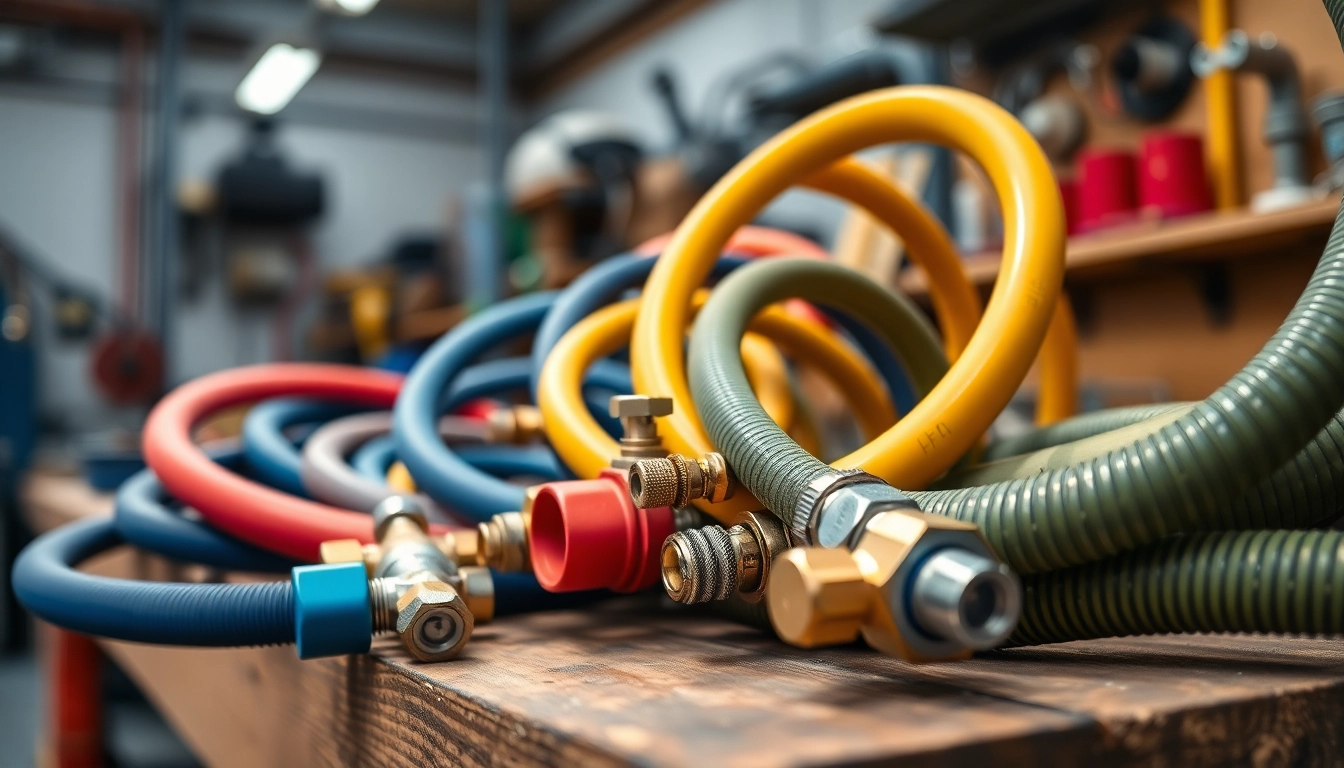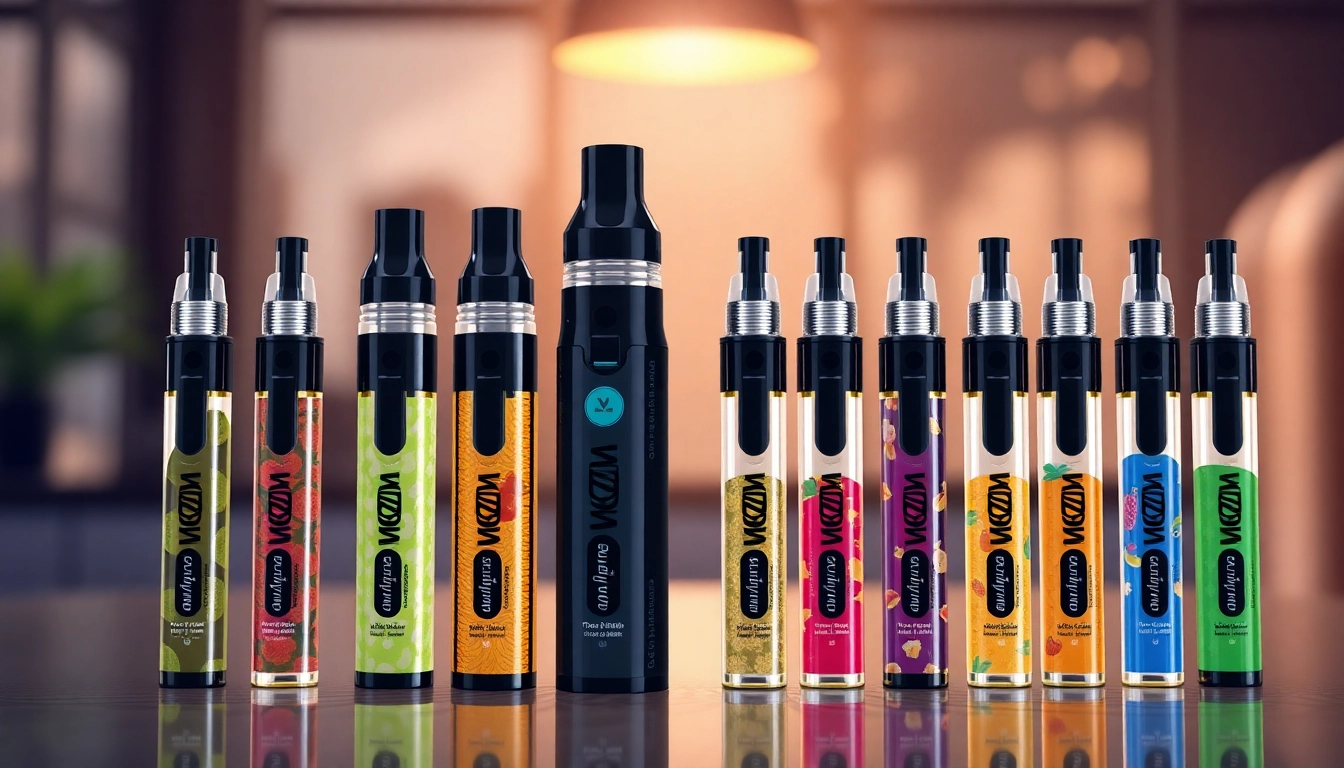Understanding Air Hoses and Fittings
What are Air Hoses and Fittings?
Air hoses and fittings are essential tools for those working with pneumatic tools and air compressors, bridging the gap between the compressor and the tools requiring compressed air. Generally made from various materials such as rubber, PVC, or polyurethane, air hoses are responsible for carrying compressed air to the tools. Fittings, on the other hand, refer to connectors that join these hoses with either other hoses, air tools, or the compressor itself. The versatility of air hoses and fittings makes them crucial in various industries—from construction and automotive to home DIY projects. When discussing air hoses and fittings, it’s important to grasp their function, types, and importance in a pneumatic system.
Types of Air Hoses Available
Air hoses come in multiple varieties, tailored for specific applications. Below are some of the most common types:
- Rubber Hoses: Known for their flexibility and resistance to wear, these hoses are suitable for heavy-duty environments. However, they can be heavy and may deteriorate with exposure to UV rays.
- PVC Hoses: Lightweight and resistant to kinks, PVC hoses are ideal for light to medium-duty tasks. They are less flexible in cold conditions but offer good durability against abrasion.
- Polyurethane Hoses: Often considered the best all-around option, these hoses are lightweight, flexible, and resistant to kinks. They perform well in a variety of temperatures and are less prone to wear and tear over time.
- Hybrid Hoses: Combining rubber and PVC, hybrid hoses offer the benefits of both materials; they are flexible, durable, and resistant to various environmental factors.
Fittings: Connectors and Their Functions
Air hose fittings are just as crucial as the hoses themselves. They come in different types, each designed for specific purposes:
- Quick Connect Fittings: These fittings allow for swift coupling and uncoupling of hoses, ideal for scenarios requiring frequent changes of tools.
- NPT Fittings: National Pipe Tapered (NPT) fittings provide a reliable seal and are typically used in industrial applications.
- Couplers: Connecting multiple hoses together, couplers enable the user to extend the reach of their air supply.
- Adapters: Used to join hoses of different diameters or types, adapters are essential for versatility in pneumatic setups.
Choosing the Right Air Hose
Factors to Consider for Air Hoses
When selecting an air hose, several factors should be taken into account:
- Length: Determine the distance between your air compressor and the tools you will be using. Longer hoses can lead to pressure drops.
- Diameter: Larger diameter hoses can carry more air but are also heavier. Choose a diameter that matches your pneumatic tools while considering the ease of handling.
- Working Pressure: Ensure the hose can withstand the pressure produced by your compressor. A hose with a burst pressure significantly higher than your working pressure is ideal.
- Environmental Conditions: Consider where the hose will be used. Will it be exposed to harsh weather, chemicals, or excessive wear? Choose a material suited for those conditions.
Common Sizes and Their Applications
Air hoses typically come in various standard sizes. The most common diameter sizes include:
- 1/4 inch: Suitable for most air tools, it provides a good balance of airflow and convenience.
- 3/8 inch: Ideal for high-flow applications where tools require more air pressure, such as sanders or impact wrenches.
- 1/2 inch: Generally used in industrial settings to maximize airflow for heavy-duty applications.
Understanding these sizes will help ensure proper functionality and compatibility with your pneumatic tools.
Material Comparisons: Rubber vs. Polyurethane
When selecting between rubber and polyurethane hoses, it’s essential to weigh their advantages and disadvantages:
- Rubber Hoses:
- Advantages: High durability and resistance to abrasion and heat.
- Disadvantages: Heavier and may crack with prolonged UV exposure.
- Polyurethane Hoses:
- Advantages: Lightweight, highly flexible, and resistant to kinking and wear.
- Disadvantages: More susceptible to damage in extreme conditions compared to rubber.
Your choice will ultimately depend on your specific usage requirements, environmental conditions, and whether you prioritize durability or flexibility.
Air Hose Fittings Explained
Types of Fittings and Their Uses
Understanding the different types of fittings will help you make informed choices when setting up your pneumatic system:
- Quick Disconnects: These enable rapid engagement and disengagement, providing flexibility in tool changes.
- Plug and Socket Fittings: These are crucial for creating a secure connection without air leakage.
- Swivel Fittings: Ideal for applications where hoses may twist; these fittings allow the hose to rotate freely.
- Barbed and Clamped Fittings: These secure hoses to fittings using clamps, preventing accidental disconnections.
How to Select the Right Fitting
Selecting the appropriate fitting involves considering the following:
- Compatibility: Ensure the fitting matches your hose diameter and type.
- Application: Understand your tool requirements, including airflow needs and pressure ratings.
- Material: Select materials that are corrosion-resistant and compatible with the conditions in which your fittings will operate.
Essential Maintenance Tips for Fittings
Maintaining your air hose fittings will prolong their life and performance:
- Regular Inspections: Routinely check for wear and air leakage. Replace fittings that show signs of damage.
- Clean Connections: Keep fittings clean to ensure a secure seal and prevent performance issues.
- Lubrication: Use appropriate lubricants to keep quick disconnect fittings functioning smoothly.
Best Practices for Air Hose and Fitting Installation
Preparation for Installation
Before beginning installation, ensure that you have the right tools and safety equipment. Key steps include:
- Reviewing the manufacturer’s instructions for all components.
- Gathering necessary tools such as hose clamps, wrenches, and cutting tools.
- Ensuring the work area is clean and free from obstructions.
Steps to Secure Connections Properly
Follow these steps to ensure secure connections:
- Cut the hose to the desired length with a hose cutter to avoid fraying.
- Insert the hose into the fitting’s barbed end firmly, ensuring a snug fit.
- Use a clamp to secure the connection, tightening it adequately without over-tightening.
- Test the connection by activating the compressor to check for leaks.
Avoiding Common Mistakes During Installation
Be aware of these common pitfalls to ensure a successful installation:
- Using Incorrect Fittings: Always match fittings with their associated hoses and tools.
- Neglecting to Check for Leaks: Always perform a pressure check after installation. A small leak can lead to significant air loss and performance issues.
- Over-tightening Clamps: This can damage fittings and hoses, leading to premature failure.
Maximizing Performance with Quality Air Hoses and Fittings
Routine Maintenance for Longevity
Ensuring the longevity of your air hoses and fittings requires regular maintenance practices:
- Inspect hoses for cracks or leaks; replace started sections where necessary.
- Store hoses properly when not in use to avoid kinking and damage.
- Keep all connectors clean and free of debris to ensure proper functionality.
Signs of Wear and When to Replace
Being vigilant about wear can save costs in the long run. Keep an eye out for:
- Cracks or splits in the hose material.
- Visible wear marks around fittings and connectors.
- Leaks that are apparent when pressurized.
Replacement should occur immediately upon noticing these signs to maintain system integrity and efficiency.
Enhancing Efficiency in Your Workspace
To get the most out of your pneumatic tools and air system:
- Match the hose and fitting dimensions appropriately to avoid bottlenecks.
- Regularly service pneumatic tools and ensure they stay in optimal working order.
- Utilize additional accessories, like hose reels, to keep your workspace organized and prevent damage.



